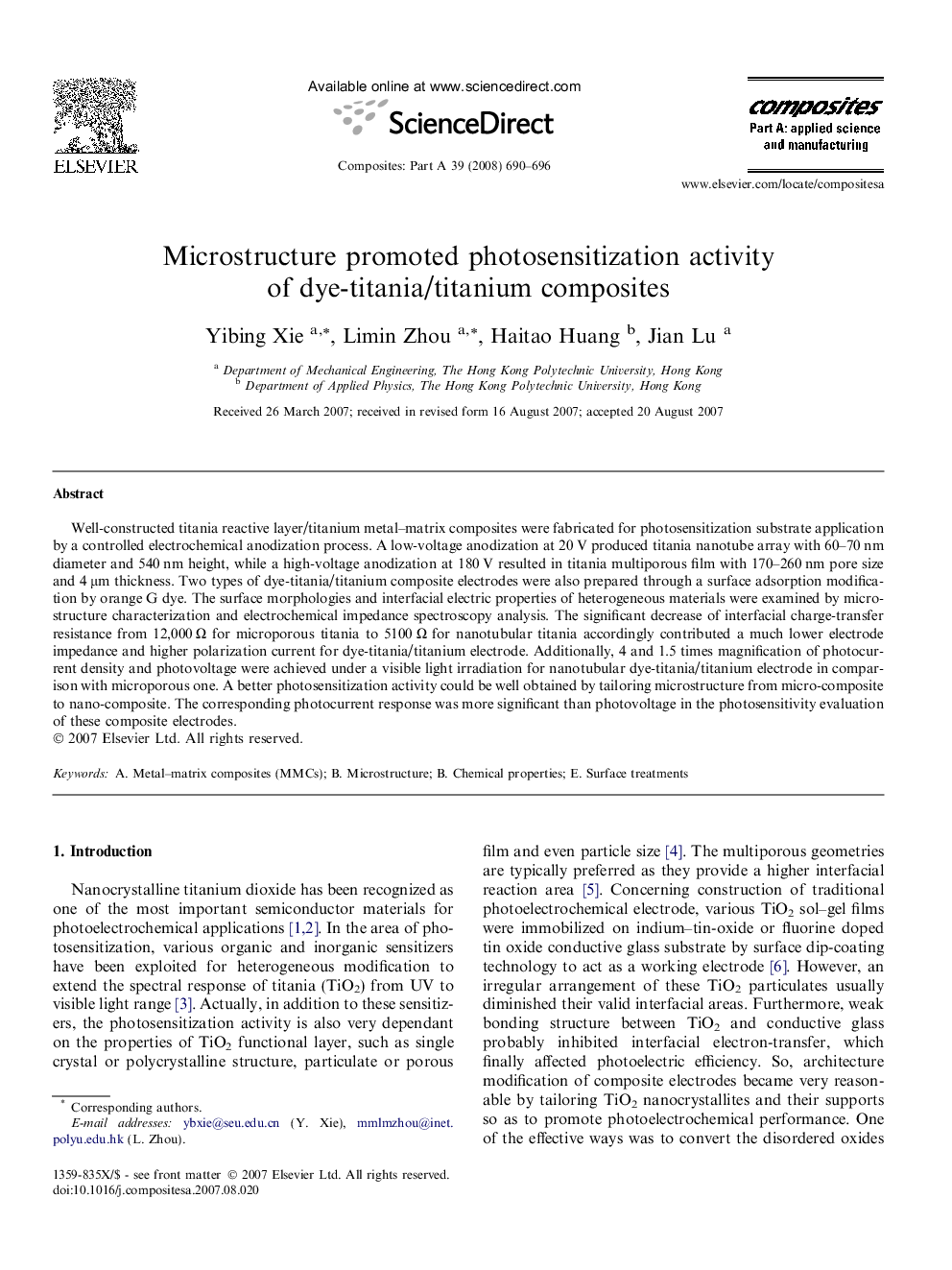| Article ID | Journal | Published Year | Pages | File Type |
|---|---|---|---|---|
| 1467909 | Composites Part A: Applied Science and Manufacturing | 2008 | 7 Pages |
Well-constructed titania reactive layer/titanium metal–matrix composites were fabricated for photosensitization substrate application by a controlled electrochemical anodization process. A low-voltage anodization at 20 V produced titania nanotube array with 60–70 nm diameter and 540 nm height, while a high-voltage anodization at 180 V resulted in titania multiporous film with 170–260 nm pore size and 4 μm thickness. Two types of dye-titania/titanium composite electrodes were also prepared through a surface adsorption modification by orange G dye. The surface morphologies and interfacial electric properties of heterogeneous materials were examined by microstructure characterization and electrochemical impedance spectroscopy analysis. The significant decrease of interfacial charge-transfer resistance from 12,000 Ω for microporous titania to 5100 Ω for nanotubular titania accordingly contributed a much lower electrode impedance and higher polarization current for dye-titania/titanium electrode. Additionally, 4 and 1.5 times magnification of photocurrent density and photovoltage were achieved under a visible light irradiation for nanotubular dye-titania/titanium electrode in comparison with microporous one. A better photosensitization activity could be well obtained by tailoring microstructure from micro-composite to nano-composite. The corresponding photocurrent response was more significant than photovoltage in the photosensitivity evaluation of these composite electrodes.
